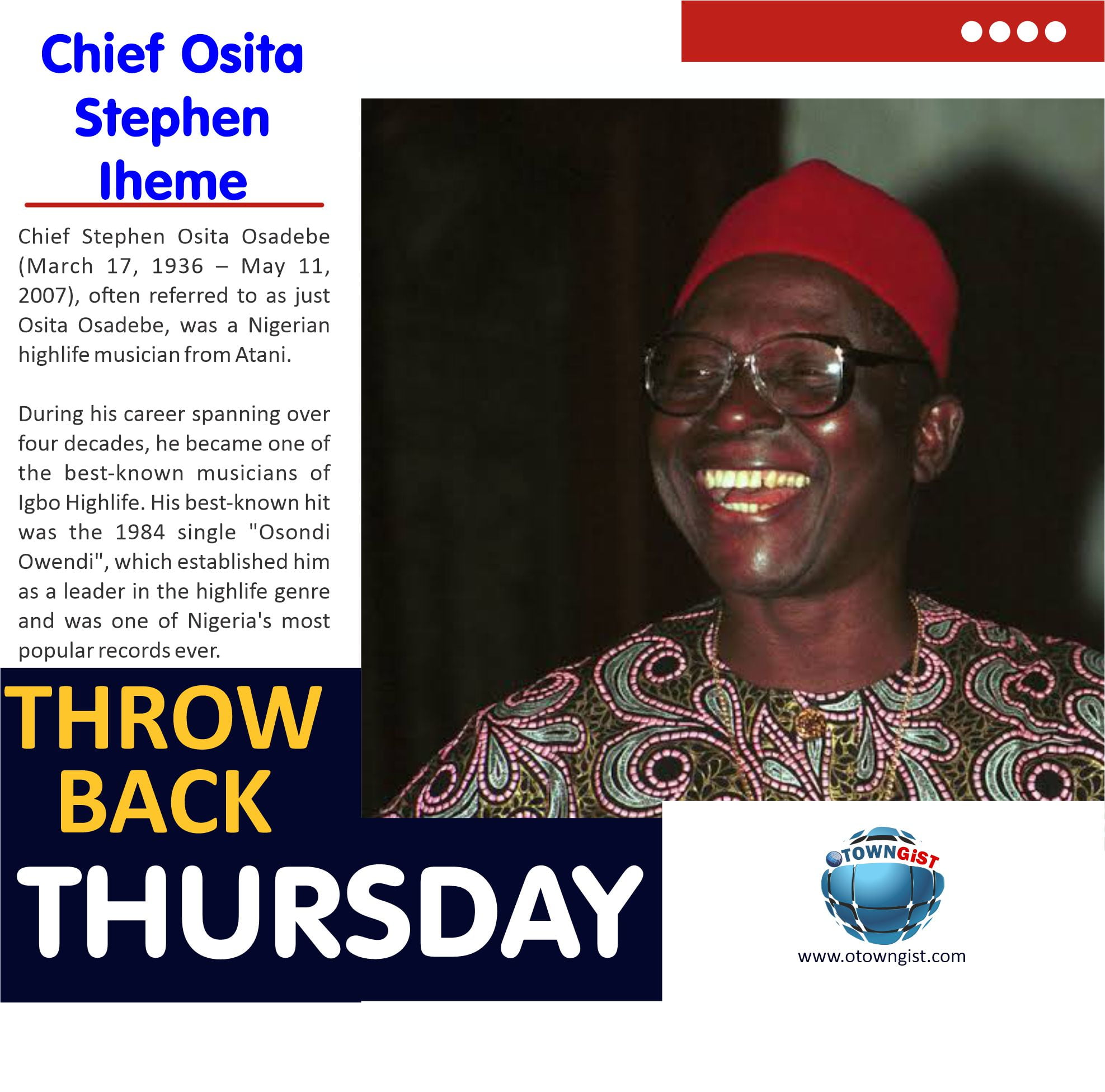Osita Osadebe was a Nigerian highlife musician from Atani.
During his career spanning over four decades, he became one of the best-known musicians of Igbo Highlife. His best-known hit was the 1984 single “Osondi Owendi”, which established him as a leader in the highlife genre and was one of Nigeria’s most popular records ever.
Osadebe was born on March 17, 1936, in the Igbo town of Atani in Southeastern Nigeria. He came from a line of singers and dancers in Igboland.
His genre, Highlife, encompassed Igbo and traditional musical elements. Along with this, calypso, samba, bolero, rumba, Jazz, and Waltz were also present in Osadebe’s musical style. It was in his high school years in Onitsha, a major commercial city near Atani, that Osadebe grew interested in music.
Osadebe started his career singing at nightclubs in Lagos in the southwestern region of Nigeria.
He had been a part of The Empire Rhythm Orchestra, led by E. C. Arinze in which he had learned much of his music skills.
A prolific composer, Osadebe released his first album in 1958 and went on to write over 500 songs; half of which were released commercially.
After stints with the Stephen Amache Band and the Central Dance Band in around 1964, Osadebe struck out as a bandleader with his group the Sound Makers.
As he became better established, Osadebe’s style matured to include social commentary, similar to, but not as confrontational as Fela Kuti. Personal trials and tribulations were usually the main topics of his commentaries. He sang in English, Pidgin English, and Igbo. Osadebe often extended his tracks for his audience’s enjoyment, allowing room for ‘people on the dance floor to indulge in the songs. He earned the nickname “the Doctor of Hypertension” of “the healing powers of his music”.
Osadebe succeeded in breaking away from the conventional big band format established by the pioneers of the music, a format that favored melodic progressions that were in the common meter, church hymnal tradition. He succeeded in completely transforming highlife into the call and response pattern of African music.
Following the Nigerian Civil War in the late 1960s, the massive exodus of the eastern peoples of Nigeria (especially the Igbo) out of western Nigeria had caused the death of the Highlife’s prominence in the then capital, Lagos.
During the war and after the war Osadebe maintained his scheduled live performances. Juju Music and later Afrobeat took precedence in Lagos, and in the 1970s James Brown and various other music forms became popular in the city. In this same decade, Osadebe’s career had reached its zenith. After turning 50 in 1986, Osadebe started to give priority to fatherhood and gave more of his time to his son Obiora and his other children from his wives. One of Osita Osadebe’s last albums is Kedu America.
Osita Osadebe died in St. Mary’s Hospital Waterbury, Connecticut on 11 May 2007 after suffering from severe respiratory difficulties.





2 Comments